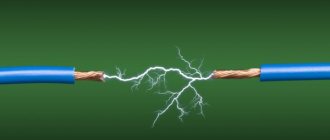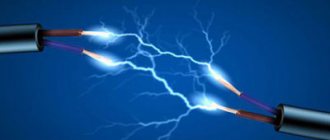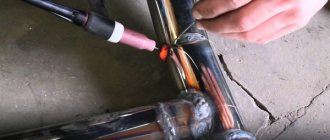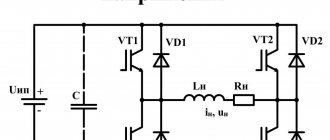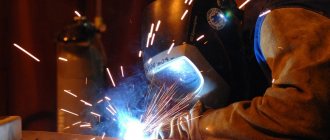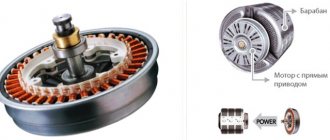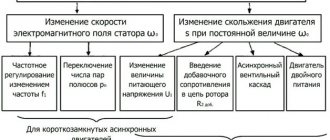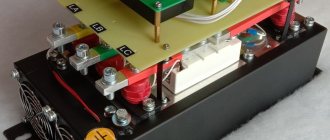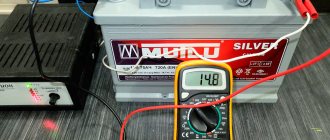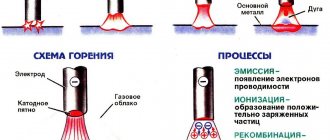Home / Devices
Back
Reading time: 3 min
0
2882
How to choose quality equipment? How not to make mistakes when buying? These and other questions plague every welder who knows about the difficulty of choosing a welding machine. We will talk about them in this article.
There are 2 types of modern welding mechanisms:
- AC units (transformers for welding);
- Direct current mechanisms (rectifiers, inverters).
The former are used much less frequently today. Although a quarter of a century ago such devices were at the peak of their popularity. This was due to the fact that there was simply no alternative.
- Relevance of the issue
- What's really going on?
- Welding arc: what is it?
- Why are changes needed?
- How to remake a mechanism at home
- Let's sum it up
Relevance of the issue
The main question for welders is considered to be: what current should the machine have in order for it to work for a long time and efficiently - unstable or static? It used to be much easier, because all the devices worked during breaks.
There was no difficult choice that arose literally 25 years ago. Today it is extremely difficult for an ordinary master to determine what will work better - inverters, transformers or rectifiers. It is worth dwelling on this issue in more detail.
What is alternating current? This is a standard electrical impulse that comes out of electrical outlets.
Old-style devices worked exactly on this principle: they connected a mechanism and received a couple of hundred Amps of welding current at the output. This was enough for successful work.
Today, technology is progressing, and devices are appearing that can change current from alternating to direct. But here's the catch: the inverter actually changes the AC to static. And this is not clear to everyone.
Our goal in this article is to tell you what both devices are. In addition, we will try to justify the importance of converting welding equipment from alternating current to direct current.
general information
AC or DC - which is better? In the 21st century, this question haunts many welders. Previously, the welding machine would work intermittently in any case, and the master actually had no choice. But with the advent of rectifiers and inverters on the market, the choice has increased hundreds of times. And now it’s no longer easy to figure out which device to choose.
We decided to help you and tell you about the features of both alternating and direct current.
Let's start with a break. Alternating current is the basis. This is what we get from the outlet when we connect a welding machine or any other electrical appliance. Welders of the old format (transformers) worked on alternating current. Such a device made it possible to obtain a welding current of several hundred Amperes from 220 Volts. Which is more than enough for manual arc welding.
But times have changed. Technological progress did not stand still, and over time, devices appeared that learned to convert alternating current coming from the network into direct current. Such devices include a rectifier and an inverter. Please note that when they say AC welding inverter, they mean that this device uses alternating current for power, but converts it to direct current.
What does all this mean in practice?
When DC machines went on sale, welders had a unique opportunity to compare them with traditional alternating machines. And they were surprised. Compared to modern inverters and rectifiers, transformers were much more difficult to use.
It's all about the AC characteristics. Because of them, the arc is ignited reluctantly and burns unstable. As a result, the seams are less even and durable. This is especially noticeable when the work is performed by a less experienced craftsman.
It also turned out that AC machines generate more noise, which affects the welder’s performance. In addition, a classic transformer consumes more welding electrodes, and metal is constantly splashed during work.
At this point, you probably thought: “Well, why then do we need AC devices if they have so many disadvantages?” In fact, it's not that simple. It’s not for nothing that the question “Which is better: direct or alternating current?” raises so many questions and discussions.
Alternating devices (transformers) are indispensable when you need an inexpensive, but at the same time powerful and reliable welder. Also, alternating current welding has proven itself to be excellent when welding metals with an oxide film on the surface. These are, first of all, aluminum and stainless steel. Transformers also cope well with welding contaminated parts, if there is no way to clean and grind them.
What's really going on?
Many welders were perplexed when new types of machines appeared on the market. Transformers turned out to be not as simple as their predecessors.
The reason for this was the characteristics of alternating current. Unstable arc burning led to crooked seams. This was especially true for the work of newcomers.
Among the disadvantages of such mechanisms were:
- Loud noise during operation;
- Inaccurate welding, metal spattering;
- Difficulty working with the device.
A completely logical question arises: “Isn’t it better to use old equipment that generates alternating current?” Many masters, both with great and little experience, think about this controversial issue.
Wire feeding
Most often, such home-made semi-automatic machines provide the possibility of feeding welding wire Ø 0.8; 1.0; 1.2 and 1.6 mm. Its feeding speed must be adjusted. The feeding mechanism together with the welding torch can be purchased at a retail chain. If you wish and have the necessary parts, you can do it yourself. Savvy innovators use an electric motor from car wipers, 2 bearings, 2 plates and a Ø 25 mm roller for this. The roller is installed on the motor shaft. Bearings are attached to the plates. They press themselves against the roller. Compression is carried out using a spring. The wire passes along special guides between the bearings and the roller and is pulled.
All components of the mechanism are installed on a plate with a thickness of at least 8-10 mm, made of textolite, and the wire should come out in the place where the connector connecting to the welding sleeve is installed. A coil with the required Ø and grade of wire is also installed here.
Pulling mechanism assembly
You can make a homemade burner with your own hands, using the figure below, where its components are shown clearly in disassembled form. Its purpose is to close the circuit and provide the supply of shielding gas and welding wire.
Homemade burner device
However, those who want to quickly produce a semi-automatic gun can buy a ready-made gun in a retail chain along with sleeves for supplying shielding gas and welding wire.
Welding arc: what is it?
We said earlier that during operation the arc may burn unsteadily. The process is often noticeable to the naked eye: the welder does his job, and the arc deviates from the specified axis. As a result, the seam turns out uneven.
Beginners often make a lot of mistakes because they don’t know all the nuances. This is fraught with rapid extinction of the arc and incorrect operation.
Such moments suggest the uselessness of buying transformers for craftsmen without experience. But everything is somewhat different: if you learn to work with such a complex mechanism, then in the future you will not have difficulties with any other device.
If you are determined to abandon AC units, we will advise you on what to do. We will tell you what to do when you have already bought a transformer, but regretted it. Our goal is to tell you how to properly remake such a mechanism.
We remake the device with our own hands
Converting a welding machine from alternating to permanent is not as difficult as it might seem at first glance. You don't even have to buy a separate DC welding machine. You can independently assemble the so-called “attachment” for your existing AC welding transformer. The set-top box is connected to a transformer and converts alternating current into direct current.
Below is a simple diagram of such a console.
This attachment essentially plays the role of a mini-rectifier. Assembled using diodes (VD1-VD4). There is a throttle (L1). Thanks to it, the arc is ignited much easier and burns more stable. The set-top box is not built into the transformer, but is a free-standing device. As mentioned above, it connects directly to the AC transformer.
A little about the details. We recommend choosing V200, D161-320 or D161-250 as diodes. They are attached to radiators. The choke is assembled on a core from a TS-270 type transformer. It can be bought secondhand or removed from a tube TV. All windings must be removed and new ones wound. We recommend 20-30 turns. Use copper wires. The optimal cross-section is 16-22 mm2. Between the halves of the core you need to put spacers made of PCB. Their optimal thickness is 0.3-0.5 mm.
Why are changes needed?
As you already understand, it is impossible to say unequivocally which device is better - one operating on direct or alternating current. These are two different devices with their own advantages and disadvantages that should be taken into account when working.
Our advice is clear: buy universal equipment with two modifications.
There are such devices on the market. But they are quite expensive, so not everyone can buy them. Experienced craftsmen can safely take such a unit. Well, if you are a beginner and do not plan to carry out work too often, buy a transformer and remake it.
The latter works very smoothly. By modifying it a little, you will get a good device that can switch from alternating to direct current. This device will become a reliable assistant in any welding business.
Why remake the device?
Now you know that the question “So which current is better: alternating or constant?” has no answer. Devices on a break and devices on a permanent basis are two different phenomena with their own advantages and disadvantages. And ideally, it is better to have in your arsenal universal equipment that can cook with both direct and alternating current.
There are such devices on sale, but they are incomparably expensive. If you are a professional, then it makes sense to buy such a device. But if you are an amateur and cook a couple of times a year at your dacha or in the garage, then it is better to purchase a transformer device and modify it a little. A transformer operating on alternating current can be equipped with the ability to switch to direct current. This way you will get an inexpensive universal device, which will also be powerful and reliable.
Let's sum it up
Every person involved in welding dreams of a universal mechanism that operates on direct and alternating current. But can a good device be inexpensive? The last condition is almost impossible to fulfill, because a ready-made mechanism costs a lot of money.
Of course, if you are an experienced welder who has a lot of orders every day, this is a good option. But what should a beginner do? After all, he is often not ready for big expenses.
In this case, golden hands and a couple of hours of free time will come to the rescue. Choose an inexpensive transformer, arm yourself with the support of an experienced friend - and you will be able to create a unique device.
The device will eventually be able to cook using direct current, and you will be satisfied with its performance. Even if you don't need the add-on, it's always convenient to have on hand. All parts for this design are easy to purchase. Or maybe they’re just collecting dust in your garage.
How to remake a mechanism at home
The process seems very complicated, but it is not entirely true. You will succeed if you already have some experience in welding. The advantage of the conversion is that you do not need to buy another DC device.
You will assemble it with your own hands: it will look like an addition to the transformer. The operating principle of the device is quite simple. To do this, you connect it to a transformer and it changes the AC current to DC.
We offer a simple diagram of this design.
Let us explain what our drawing means. The small rectifier is assembled using diodes (VD1-VD4). L1 is the throttle. With the help of the latter, the arc will ignite easily and work much more efficiently.
This accessory will not be built into your transformer. It is a separate device. For the latter to work, you need to connect it to a variable transformer using wires.
Sequential assembly of all parts
All elements of the welding unit must be located on a base made of metal or textolite strictly in their places.
According to the rules, the rectifier is adjacent to the transformer, and the inductor is located on the same board with the rectifier.
The current regulator is installed on the control panel. The frame itself for the structure of the unit is created from aluminum sheets; steel is also suitable for this.
You can also use a ready-made case, which previously protected the contents of the system unit of a computer or oscilloscope. The main thing is that it must be strong and solid.
A board with thyristors is placed at a great distance from the transformer. The rectifier is also not installed close to the transformer.
The reason for this arrangement is the strong heating of the transformer and inductor.
IMPORTANT TO KNOW: Welding wire for semi-automatic
Thyristors mounted on aluminum radiators remove heat from the inductor. They even cancel out the heat waves emanating from the wires.
An electrode holder is attached to the outer panel, and a wire with a plug is attached to the rear panel to connect the unit to a household network.
The video in our article demonstrates how to assemble a welding unit with your own hands.
Video:
Under no circumstances should the elements of the unit be fixed close to each other, as they must be subject to airflow.
It is necessary to make holes on the sides of the frame from where air will flow. This is also necessary for installing a cooling system.
If the welding unit is constantly in the same place, then it is unlikely that anything will happen to it.
The current regulator, or more precisely, its handle fixed on the outer wall, will be able to work for a long time.
But portable mini-inverters that are taken for field work may be subject to mechanical shocks. Basically, the body of the product suffers from this, but there is a risk of the throttle falling off.
The product is assembled - it’s time to check how it functions. When testing the operation of the welding unit, temporary wires should not be used.
You need to check the product with standard contact cables.
During the very first connection to the network, look at the current regulator. It is important to ensure that there are no unfixed parts left.
If the unit is in good working order and free from defects, then you can start welding in various modes.
Pulling device
In a more complex case, the manufacture of a semi-automatic machine involves reworking the arc welding inverter and creating a broaching device from scrap materials. If you had to repair an inverter device, then you can safely implement the second option.
A system unit is ideal as a housing for a drawing device for an inverter-type semi-automatic device. It is quite easy to open, yet spacious and durable.
This will allow you to simply adjust the pressure of the rollers and install the spool of wire. The advantage of the system unit is that it is easy to make holes in the right places, and there is a built-in 12-volt power supply. It is needed to power the additive broach drive and the gas valve.
For the necessary fasteners, it is necessary to make mock-ups of the built-in components from scrap materials and try them on inside the box. After making sure that the selected layouts are correct, you can begin manufacturing the fasteners.
You can buy a reel for a semi-automatic machine ready-made or make it yourself. It is very simple to produce. The diameter of the cheeks should be 200 mm, and the cylinder on which the wire will be wound should have a diameter of 50 mm, so that a plastic pipe with the same rating can be used as an axis.
The feed mechanism will require two pressure rollers and one guide roller and a spring. An electric motor from the wipers can be used as a broaching motor. As a base on which the parts will be attached, you need to use a three-millimeter metal sheet.
Holes are drilled in the plate in the right places for attaching the rollers and the electric motor shaft of the future semi-automatic device. Since one roller is a pressure roller, the hole for it is drilled in an oblong shape.
A pressure spring will press on it from above, the force of which is adjusted through a screw. The roller and bearings are mounted on one side of the plate, and the motor on the other. A feed roller is mounted on the motor shaft.
The resulting device is installed inside the system unit so that the alignment of the rollers and the axis of the MIG torch connector are in the same plane. This will prevent the wire from creasing when pulling. To straighten the additive during unwinding, a tube is installed in front of the rollers.
Implementation of the electrical part
For this you will need:
- two automotive relays;
- diode;
- PWM regulator for the engine;
- capacitor with transistor;
- idle solenoid valve - for supplying gas to the burner. Any VAZ model will do, for example from a V8;
- wires.
The wire and gas supply control circuit is quite simple and is implemented as follows:
- when you press the button on the burner, relay No. 1 and relay No. 2 are activated;
- relay No. 1 turns on the gas supply valve;
- relay No. 2 works in tandem with a capacitor and turns on the wire feed with a delay;
- wire pulling is done with an additional button, bypassing the gas supply relay;
- To remove self-induction from the solenoid valve, a diode is connected to it.
- It is necessary to provide for connecting the burner to the power cable from the inverter. To do this, next to the Euro connector, you can install a quick-release connector and connect it to the burner.
The semi-automatic device has the following operating sequence:
- The gas supply is turned on.
- The wire feed starts with a slight delay.
This sequence is necessary so that the wire immediately enters the protective environment. If you make a semi-automatic machine without delay, the wire will stick. To implement it, you will need a capacitor and a transistor through which the motor control relay is connected. Operating principle:
- voltage is applied to the capacitor;
- it is charging;
- current is supplied to the transistor;
- the relay turns on.
The capacitance of the capacitor must be selected so that the delay is approximately 0.5 seconds - this is enough to fill the weld pool.
After assembly, the mechanism must be tested, and the manufacturing process can be seen on video.
Control node
To supply gas and additives to the semi-automatic welding machine you will need:
- 2 relays;
- diode;
- PWM regulator;
- capacitance with transistor and resistance;
- solenoid valve;
- wires.
The valve is required to allow gas to enter the welding zone. All components can be purchased at the used parts sale.
The control circuits in an inverter-type semi-automatic device may be different, but their essence is simple and is as follows.
When you press the button on the burner, both relays switch. The first supplies voltage to the valve that opens the gas supply.
The second relay supplies power to the wire feed motor. But its activation occurs a little later due to the low-pass filter in the form of an RC chain formed by a capacitor and a resistor.
Sometimes it is necessary to draw wire without gas supply. For this case, an additional button is provided that provides broaching, bypassing the gas relay.
Self-inductance from the valve is removed if a diode is connected. To power the MIG torch from the inverter, you need to install an additional one next to the Euro connector, through which the current will flow.
When you turn on the button on the burner, gas begins to flow, after a while the additive is supplied. The delay time is regulated by selected capacitance and resistor values. A pause in an inverter-type semi-automatic machine is necessary to protect the weld pool from exposure to atmospheric air with gas.
When the button is turned on, voltage is supplied to the capacitor. It gradually charges, and when a certain value is reached, the transistor opens, which causes the relay to turn on.
